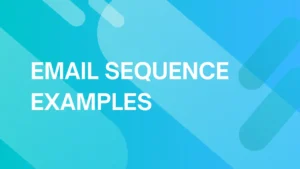
What Are Soft Bounces and Hard Bounces?
If you’ve ever attempted to send out an email and it doesn’t reach the intended recipient/mail server, you know the frustration. Email prospecting campaigns often face this issue.
In the digital world, this is known as a bounce.
Under normal circumstances, the email server will provide a reason for why a piece of mail bounces so the sender knows what went wrong on the other end — and this is when you need to start making some changes.
What is a bounced email?
Simply put, bounced emails are those that couldn’t reach their intended recipients. These bounces are categorized as hard bounces or soft bounces.
A hard bounce indicates a permanent delivery issue, such as an invalid or non-existent email address.
According to a recent study, approximately 22.5% of the email addresses in a list decay and turn invalid every year, contributing to a significant portion of hard bounces in email campaigns.
On the other hand, a soft bounce indicates a temporary delivery glitch, which might be due to a recipient’s full inbox or server downtime.
Although soft bounces might seem minor, the effect can accumulate and significantly affect your email marketing strategy.
Hard bounce vs. soft bounce
Before we explore further, let’s put the distinctions between hard and soft bounces under the microscope.
These two types of bounces are characterized by different issues and require distinct approaches to resolution.
Here is a quick breakdown of the key differences between them:
| | Hard Bounce | Soft Bounce |
| Definition | A permanent failure to deliver the email, often due to invalid email addresses or domains. | A temporary issue with email delivery, typically resolved with time or minor adjustments. |
| Reasons for it | – Fake/Incorrect Email Address- Non-existing Domain- Recipient Server Block | – Full Inbox- Large Attachment Size- Server Downtime |
| Impact on sender reputation | Can severely affect, potentially leading to blacklisting. | May impact if the soft bounces occur frequently, indicating potential issues with content or list quality. |
| Resolution | Remove such email addresses from your list immediately to avoid future bounces. | Investigate the cause and retry sending after addressing the issue, if possible. |
Understanding the differences between hard and soft bounces can safeguard your sender’s reputation and enhance the effectiveness of your email marketing strategies.
Hard Bounce
A hard bounce occurs when an outgoing email fails to make contact with the intended address/mail server and cannot be delivered.
This could be due to various reasons such as an incorrect email address or a non-existing domain.
A hard bounce is a severe roadblock in email marketing. Hard bounces will directly affect your domain reputation and should be avoided at all costs — over time, this could potentially result in blacklisting by ISPs.
To mitigate the risk of hard bounces, consider verifying your email list through a reputable service like EmailListVerify before launching your campaign.
Top 5 causes of hard bounces
- Fake/Incorrect Email Address: This happens when the email address doesn’t exist. It could be due to typos or the recipient providing a false email address intentionally.
- Fake/Invalid Domain: Similar to the fake email address, here the domain provided does not exist or is misspelled.
- No Email Server Exists Under the Domain: Although the domain exists, there’s no designated email server to receive the mail.
- Domain Has Been Blacklisted: This is a serious issue where the domain has been marked for spam or other malicious activities, and emails to this domain are blocked.
- Recipient’s Email Server Has Blocked the Sender’s Server: Sometimes, the recipient’s email server might block the sender’s server for various reasons, including poor sender reputation or suspected spam content.
Soft Bounce
A soft bounce occurs when an email reaches a recipient’s mail server but gets bounced back undelivered before it reaches the intended inbox.
Soft bounces typically indicate that the address does exist but cannot be reached at the time of sending an email.
A soft bounce is less severe but still harmful to your email deliverability rates since ISPs will register it as a bounce, regardless of the reason.
Top 5 causes of soft bounces
- Insufficient Inbox Storage: The recipient’s inbox is full, leaving no space to store new messages.
- Large File Size: The email contains attachments or content that exceed the allowable size limits set by the recipient’s email server.
- Recipient’s Mail Server Down: The mail server of the recipient is temporarily down or facing technical issues.
- Content Filters: The recipient’s email server identifies elements in the email (like certain keywords or attachments) as spam or suspicious, causing a bounce. For example, an error message like “550 high probability of spam” indicates that the server has flagged the email content as likely spam.
- Recipient Email Server Maintenance: Occasionally, a server might be undergoing maintenance, causing a temporary delay or bounce.
How to improve your email bounce rate
Experiencing a high bounce rate can spell disaster for your marketing campaigns.
This suggests that a substantial portion of your target audience is not receiving your messages, which can then have ripple effects on your business’s overall performance.
The good news is that If this is happening, there are steps you can take to fix the issue.
Recognizing a high bounce rate early on will allow you to revisit and revamp your strategies before any significant damage occurs.
By dedicating time and effort towards reducing your bounce rate, not only will you be safeguarding your sender reputation, but you’ll be setting the stage for more effective campaigns in the future.
Here is an example of some strategies that can help you fine-tune your approach to email marketing performance:
- Maintain Good List Hygiene: To ensure the efficacy of your email marketing campaigns, it’s essential that you maintain good list hygiene. You can do this by regularly updating your mailing list to remove inactive or invalid email addresses. For example, make a practice of updating your list quarterly and removing contacts that have not engaged with your emails in the last six months.
- Use Double Opt-In: Implementing a double opt-in process is an excellent way to make sure only the people really interested in your emails receive them.
- Monitor Email Delivery: Actively monitor your email delivery patterns so you can adjust strategies as needed to avoid bounces. Keep track of bounce rates and engagement levels to identify any recurring issues or patterns, so you can then craft more effective campaigns.
- Use Email Verification Tools: These tools can potentially help in filtering out invalid addresses, preventing hard bounces, and preserving your sender reputation. EmailListVerify can check the validity of email addresses and get rid of spam traps, hard bounces, and disposable or catch-all emails without breaking your budget.
- Understand MSP Policies: Enhance your delivery rates by understanding and adapting to the varying policies of different Mail Service Providers regarding email bounces. Research and adapt your strategies to comply with the specific requirements of major MSPs like Gmail, Yahoo, and Outlook.
- Optimize Email Templates: Focus on optimizing your email templates to prevent soft bounces related to issues such as email size or inappropriate content. For example, avoid using large images or attachments that might exceed the size limits set by some email providers.
- Retry Soft Bounces: Create a strategy to resend emails that have experienced a soft bounce, possibly after a 72-hour period, enhancing the likelihood of successful delivery and engagement.
- Take Advantage of Monitoring Tools: Use monitoring tools such as 250ok, Return Path, and YesMail to monitor inbox placement rates and blacklist status. These tools offer detailed analytics and insights into your email performance, helping you improve your strategies for better inbox placement and avoiding spam filters.
- Purge Invalid Emails and Non-Responders: To enhance your sender reputation and delivery rates, implement regular removal of non-responding or invalid email addresses from your list. Use EmailListVerify to identify and purge invalid or inactive email addresses.
- Learn how to send an email to multiple recipients individually: Understanding how to send an email to multiple recipients individually can help maintain personalization and reduce the chances of your emails being marked as spam. This practice ensures that each recipient feels valued and reduces the likelihood of triggering spam filters.
Frequently Asked Questions
Before we wrap up, let’s address some of the common questions about email bounces.
1. Are Hard Bounces Bad?
Hard bounces can severely impact your sender’s reputation, possibly leading to blacklisting.
If this happens, your emails may not reach the inbox of your intended recipients and instead be filtered directly to the spam folder.
In the worst-case scenario, ISPs might block your emails completely, drastically affecting your reach and effectiveness.
It is essential to address these promptly by removing such email addresses from your list and focusing on maintaining a clean and verified list.
2. How many Hard Bounces do I need to harm my email score?
There isn’t a fixed number as it varies between different email providers and even among industries.
For example, the average hard bounce rate for business and financial industries is 0.55% but the numbers are much higher (1.20%) in the construction industry.
However, maintaining a bounce rate below 2% is generally considered a healthy benchmark.
If your bounce rate is above 2%, then it’s time to take a closer look and see what needs to be improved.
3. What happens after an email bounces?
This depends on whether this is a hard or a soft bounce. If it’s a hard bounce, then there’s nothing else to do — the email won’t go through no matter how many times you try.
If it’s a soft bounce, you should analyze the reason for the bounce and take necessary actions, like removing invalid email addresses or modifying the content, to avoid future bounces.
4. Can I resend emails to soft bounce addresses?
If your email received a soft bounce, you can try resending the emails. But before you do that, you should spend some time figuring out the reason for the bounce.
For example, maybe the structure or content of an email has led to it being blocked or not delivered.
Email serves can interpret heavy and busy email templates, lots of links, or too many images as suspected spam content.
You can also try waiting for a while before attempting to resend (48 to 72 hours is a good rule of thumb) to increase the chances of successful delivery.



